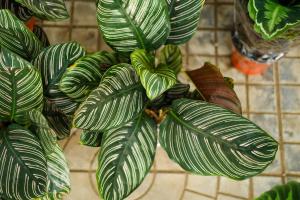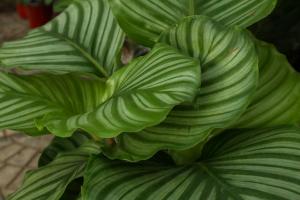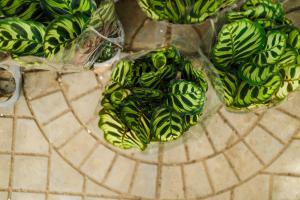1、 Curing method
1. Temperature: it is afraid of cold. The breeding temperature should be controlled between 18 and 30 degrees, and the temperature in winter should be controlled above Shidu. The winter in the north is relatively cold, so open field breeding is not advisable. Indoor breeding must be carried out. There is heating in winter in the north. When overwintering, the plants should not be placed directly on the ground, but at a height from the ground
2. Watering: it is suitable for growing in a relatively humid soil environment. Therefore, in order to meet its living conditions, it needs to be watered every day. However, because the root strip is not resistant to waterlogging, the amount of watering should be controlled every time. It can be watered until the soil is completely wet without ponding
3. Fertilization: when it grows, it consumes a lot of nutrients. Generally, it needs to be fertilized the next day. After the growth period, it can be fertilized once a month. Fertilization is required before winter, in order to ensure that nutrients can be supplied during winter
4. Light: the growth of green plants is inseparable from sunlight, and it is no exception. The daily light should be more than six hours. In addition to the appropriate shade in summer, the whole day sunshine can be accepted at other times
2、 Breeding skills
1. Propagation: it can be propagated by ramet method. The time of ramet should be in spring, because the climate at this time is relatively stable and more suitable for its growth than other seasons. First, cut the root block with stems and leaves from the healthy mother plant, and then bury the sterilized stems directly in the soil, and maintain the curing temperature at 20 to 28 degrees. Generally, new roots can grow in about ten days
2. Pruning: generally, it does not need pruning. Just pay more attention to the rotten and dry branches and leaves at ordinary times
3、 Problem diagnosis
1. Insect pest: it is easy to infect red spider. If the situation is not very serious, it can be sprayed with insecticide. At ordinary times, spraying water mist on the back of the blade can also play a preventive role
2. Yellowing of branches and leaves: the yellowing of branches and leaves is mostly caused by excessive watering. Because of excessive watering, the root of the plant cannot breathe normally, which will affect the growth of the plant. To solve this problem, it should be dug out, then the rotten root strips should be trimmed off, and finally replanted into soil with good drainage
4、 Other issues
1. Toxicity: non toxic
2. Edible: not directly edible

 jackfruit
jackfruit snake plant
snake plant hibiscus
hibiscus hydrangea
hydrangea lavender
lavender Green roses climb al...
Green roses climb al... If you don't pay att...
If you don't pay att... Management of four g...
Management of four g...



































